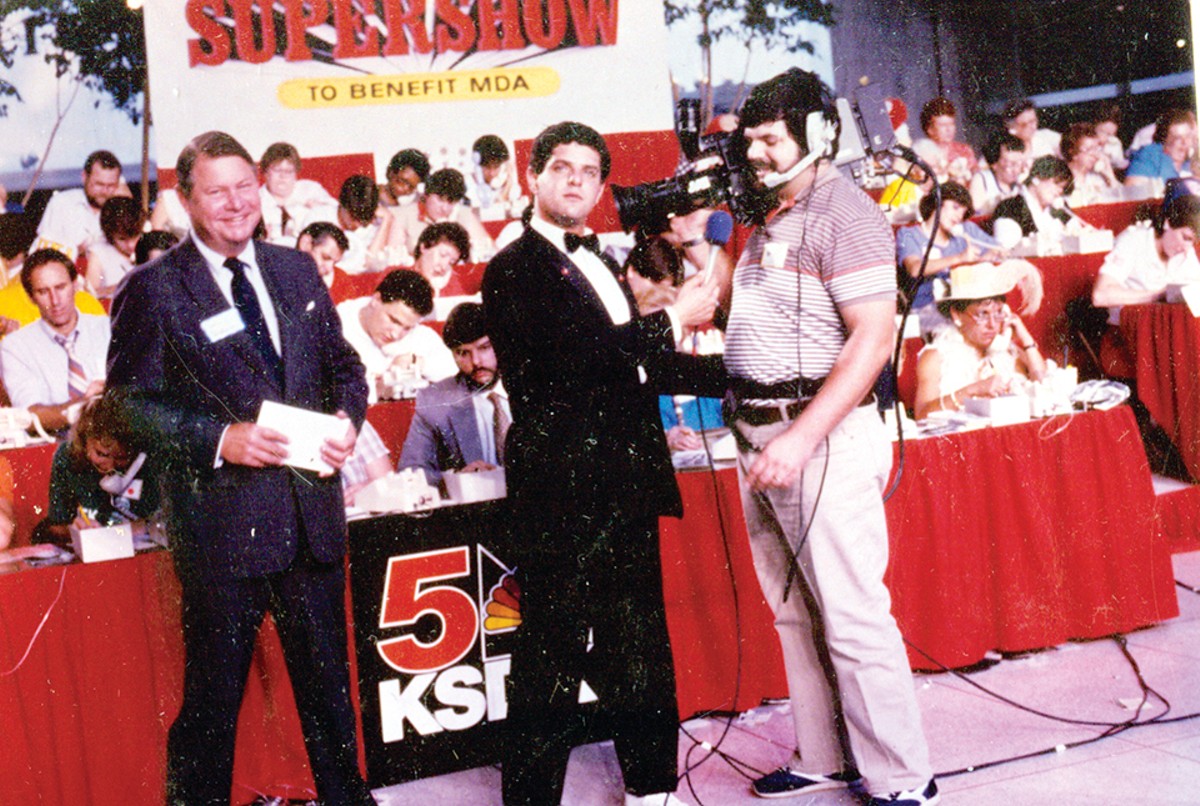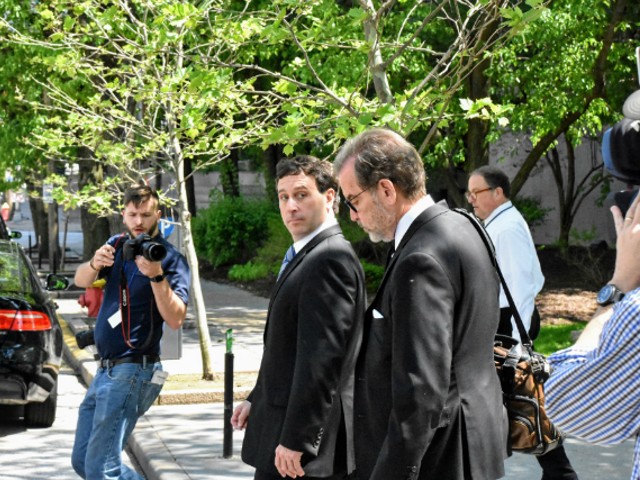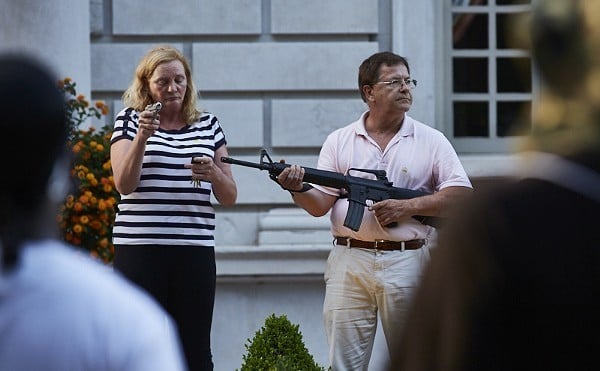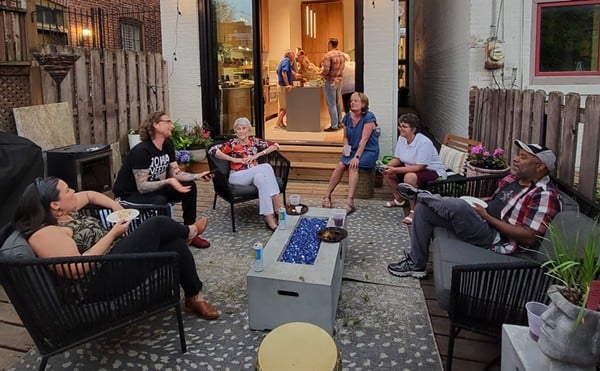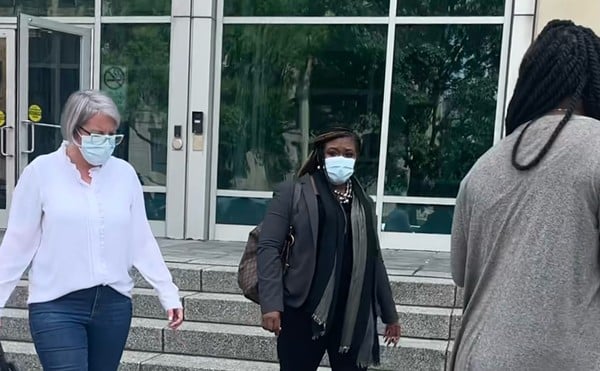Karen Foss was a little surprised. She'd just finished her usual 10 p.m. newscast on KSDK when the station's chief meteorologist, Bob Richards, asked her to stop by the weather station.
"That was unusual," Foss recalls. "And I was already very, very concerned about his demeanor — just the vibe he was giving off. He was obviously very upset and angry. But I'd seen him upset before; I'd seen him angry before."
Richards had come to Foss in the past to discuss both personal and work issues, but they weren't exactly close. A group dinner once, perhaps, but they didn't socialize outside of work.
She went over to Richards' workstation to talk. "I know there've been lies about you before in the community," he said. "How did you deal with it?"
That set Foss back; it wasn't what she was expecting to hear from the curly-haired weatherman.
"Bob, if what they're saying is true — you know, you are so talented and so popular, I think you can get through this," she told him. "If this is true, you probably need to say 'I'm sorry' and make amends. I think people will just forgive you because they all love you. We all make mistakes.
"He just wasn't hearing it. He was just totally in denial," Foss adds.
"It's not true — this woman's a liar," Richards told her, and that was the end of the conversation. Foss got in her car and made the drive from Channel 5's studio in downtown St. Louis to her home in Clayton. She was on Lindell Boulevard when she realized her hands were shaking so badly she couldn't grasp the steering wheel.
She pulled over and collected herself.
"It had just been such a disturbing conversation," Foss recalls. "He didn't say anything about suicide. But he just was — I just felt like he was so out of touch with reality, that's what I'm trying to say. I couldn't handle it. I just stopped. Then went home, went to bed and early in the morning got this phone call. And then it all began to unravel."
Bob Richards — born Robert Lloyd Schwartz in Bloomfield, New Jersey, in 1956 — arrived in St. Louis in October 1983. He'd never even seen the town when he flew in to interview with KSDK. He was hired that day. "I was pleasantly surprised that it had electricity and flushing toilets," he joked later to the St. Louis Post-Dispatch. After graduating from Penn State, Richards worked as a meteorologist in Atlanta; Knoxville, Tennessee; and Columbia, South Carolina; and joined the Weather Channel in Atlanta.
He met his future wife, Kathy, when he moved to Stamford, Connecticut, to do weather for the Satellite News Channel; she worked in the same building. SNC was the fledgling CNN's first competitor: At one point, Richards was recording 21 forecasts a day to sate the 24-hour news cycle. Richards must have seen the writing on the wall, though — SNC folded after just sixteen months, two days after Richards was hired at KSDK to replace Dave Murray.
At the time, there were three news stations in St. Louis, and the majority of homes in town did not have cable or satellite television. The personalities of KSDK, KMOV (Channel 4) and KTVI (Channel 2) were written about often in who's-who columns in the Post-Dispatch and were treated like out-and-out celebrities.
"St. Louis was very late to adapt or embrace cable TV," says former KSDK cameraman Cecil Corbett. "You had three or four stations back then. You invite these people into your home, and there's a certain level of trust — so [viewers] do kind of establish a connection with them."
Before joining KSDK in 1979, Foss had worked at a station in Kansas City where there was not the same newscaster-as-celebrity culture.
"It was odd. I didn't feel it was that way in Kansas City," she says. "I felt very much like, 'OK, I'm going to work, do my job and go home,' just like the teacher, the bus driver, the checkout clerk, and in St. Louis there was a certain sense of celebrity attached, which kind of threw me for a loop. I was very surprised. And I think it was partially — not exactly created, but fanned by the gossip columns."
Former Post-Dispatch and St. Louis Globe-Democrat columnist Jerry Berger was a big source of this, but both papers had local TV critics, which added to the high profile of on-air talent. Berger, who started his career in Hollywood, worked in public relations with the likes of Frank Sinatra, Liza Minelli and Cary Grant. He eventually came back to St. Louis and brought that movie biz sensibility with him, covering local characters' comings and goings, often with a salacious angle. (Berger pleaded guilty in 2013 to first-degree sexual misconduct).
It was KSDK general manager Bill Bolster's idea to pair Richards with the station's new sportscaster, Mike Bush.
"Bill, for all his idiosyncrasies, really, on a gut level, understood television," Foss says. "And he saw the potential of pairing Mike and Bob in this way, and he made it happen. And it worked."
Bush joined KSDK in 1985. By the late '80s, Bush and Richards became known for a series of commercials that Bolster sent them to Hollywood to film. The ads are pure '80s cheese — you can find them on YouTube — and feature the duo in a variety of special-effects-aided situations. (Bush stopped responding to requests to be interviewed for this story.)
"The strategy is that both of them have strong personalities that mesh so well," KSDK director of creative services Richard G. Brase told the Post-Dispatch ahead of the debut, noting that the silly ads wouldn't damage their credibility the way they might Foss' and Dick Ford's, her on-air partner.
"In the spots, both television personalities do a spinoff of the Blues Brothers, called the 'Kews Brothers.' Brase said in excess of $100,000 was spent on production for the spots," Berger reported, next to a huge black-and-white photo of Bush and Richards in full Blues Brothers gear. The goofy spots were instantly a topic of conversation around town.
"What is KSDK doing spending $100,000 on a promo? Second, did they have to spend the money out of town?" wrote Post-Dispatch reader Walt Lockley of Bridgeton to TV critic Eric Mink. "Third, if they had to spend the money out of town, how come they got back such a hackneyed, over-produced and self-congratulatory piece of [garbage]? ... What makes me angriest is that KSDK pretends it is a serious news-gathering and news-reporting organization ... but when it comes to attracting an audience, they trot out these two cartoonish clods. It makes me sick to my stomach."
Dorothy Boyd of Collinsville, Illinois, disagreed.
"What's wrong with having some fun? God knows the news is terrible and sometimes those giving the news and we, the viewers, need a break. Bob Richards and Mike Bush are believable with the weather and sports. A little clowning around certainly doesn't hurt their reputations."
The dynamic duo eventually became best known for being the local hosts of the Jerry Lewis MDA Labor Day Telethon, back when Jerry Lewis was still the host. Other local personalities would answer the phones and take donations while Bush and Richards appealed to the viewers.
Two years in a row, WKBQ disc jockeys Steve and D.C. (a.k.a. Steve Shannon and Isaiah Wilhelm) answered phones and appeared on air alongside the KSDK weatherman and sportscaster.
"Steve and I answered phones and then Bob and Mike would come over and talk to us," Wilhelm recalls. "Off the air, we talked to them for a little bit, but that was the extent of how well we knew them.
"Mike was a little cold toward us because he was on a competing morning show at the time, but he was professional. Bob was the opposite. I think Bob was very outgoing and gregarious, and my impression of him was that he was the kind of guy that never met a stranger."
Corbett, who joined KSDK in 1984 as a cameraman, had a similar initial impression of Richards. They began working together on "Weather on the Road" TV spots on Fridays, where they'd visit an out-of-the-way small town and do the weather on location.
"I would go out in advance in the satellite truck, and then [Richards] would come out — these were the 'Mercedes '80s' — he would come out in the helicopter, and fly back and get ready for his ten o'clock show. We did that for a couple of summers, and got to be closer, because you're out in the field, and I'd always set up something zany for him to do."
The two became even closer after Richards took up aviation, a hobby he also shared with St. Louis radio host and personality Guy Phillips. Corbett remembers, in particular, an afternoon where he and Richards flew down to Sikeston and had lunch at Lambert's Café, and Corbett let Richards take the controls for a while during the flight.
Phillips and Richards met when the latter first joined Channel 5; he was also hired as the morning weather guy on Phillips' show on Y98.
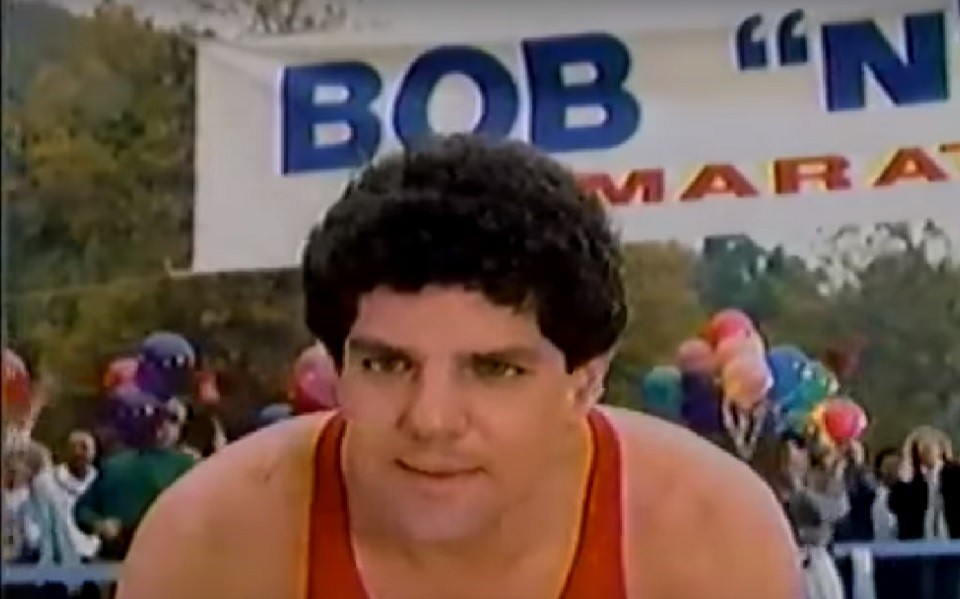
"He was a funny guy, and that came out on TV, especially when Mike Bush was introduced," Phillips says. "[Richards] played accordion, nobody really knew that [at the time], so we started doing these things called 'The Weather Raps' — Bob would come up with these weather raps and he'd use his accordion. It was awfully funny."
After going up in the air with Corbett and Phillips, Richards quickly earned his private pilot's license, and he and Corbett started working together on their instruments certification, a process which requires a lot of trust between a pilot and his safety pilot. Corbett didn't have his own plane, but Richards, with his 1980s on-air salary, bought a cherry red Piper Cherokee 180, which sped up his certification process. Richards was even the first pilot to take off at Spirit of St. Louis Airport after it reopened in October 1993 following the big flood.
"I think there was an element of trust [between us], but you can't get in too much trouble at the Crawford County Fair — there'd be a tractor pull or a cow-milking contest, stuff like that," Corbett says of their time traveling around for Channel 5. "That was Bob's nature — he knew he had to keep ahead of the competition, and he was zany. He was fun. He loved meeting people. He'd descend out of the sky in this helicopter, and everybody would line up to say hi and take pictures. It was all quite cool, back when stations spent money on things like that."
Longtime friend Karlee Stratton first met Richards on the set of a public service announcement in the late '80s, where she was an extra. They sparked up a conversation between takes.
"He was just funny; he was always making a joke," she says. "He was a very personable guy, but the main thing that you could really tell about him was that he had very low self-esteem. He was always kinda chucking himself. I don't find it surprising. I think that a lot of people who are insecure overcompensate by doing something great, but it doesn't fix what is wrong."
Stratton says Richards tried to ask her out at first, but she could clearly see he was wearing a wedding ring. Instead, they became close friends over the next seven or so years.
"By all accounts he was happy," Phillips says. "He had a young child, lived out in Grover, had a nice little house out there. His career was kicking into high gear, he was popular on the No. 1 TV station, he was popular on the No. 1 radio station — he had a lot going for him."
Foss, Corbett, Phillips and Stratton all agree that they didn't see Richards as any kind of ladies' man at the time — sure, he was famous, but women weren't particularly taken in by him.
In April 1989, the Post-Dispatch's At Home section did a feature on Richards' new home in Grover (which has since been incorporated into Wildwood) with the headline, "Bob Richards Separates Business, Personal Life." The story detailed the couple's new build, filled with antiques and country-style decor and life with their two-year-old daughter, Tricia.
"I don't like to live a celebrity lifestyle," Richards told reporter Carolyn Olson. "Karen Foss is into that, and I'm not. I'm more of a homebody ... I like to maintain a sense of separation as far as my TV job and my personal life."
At the time, no one — not Richards' friends or his colleagues — knew how truly he meant those words.

